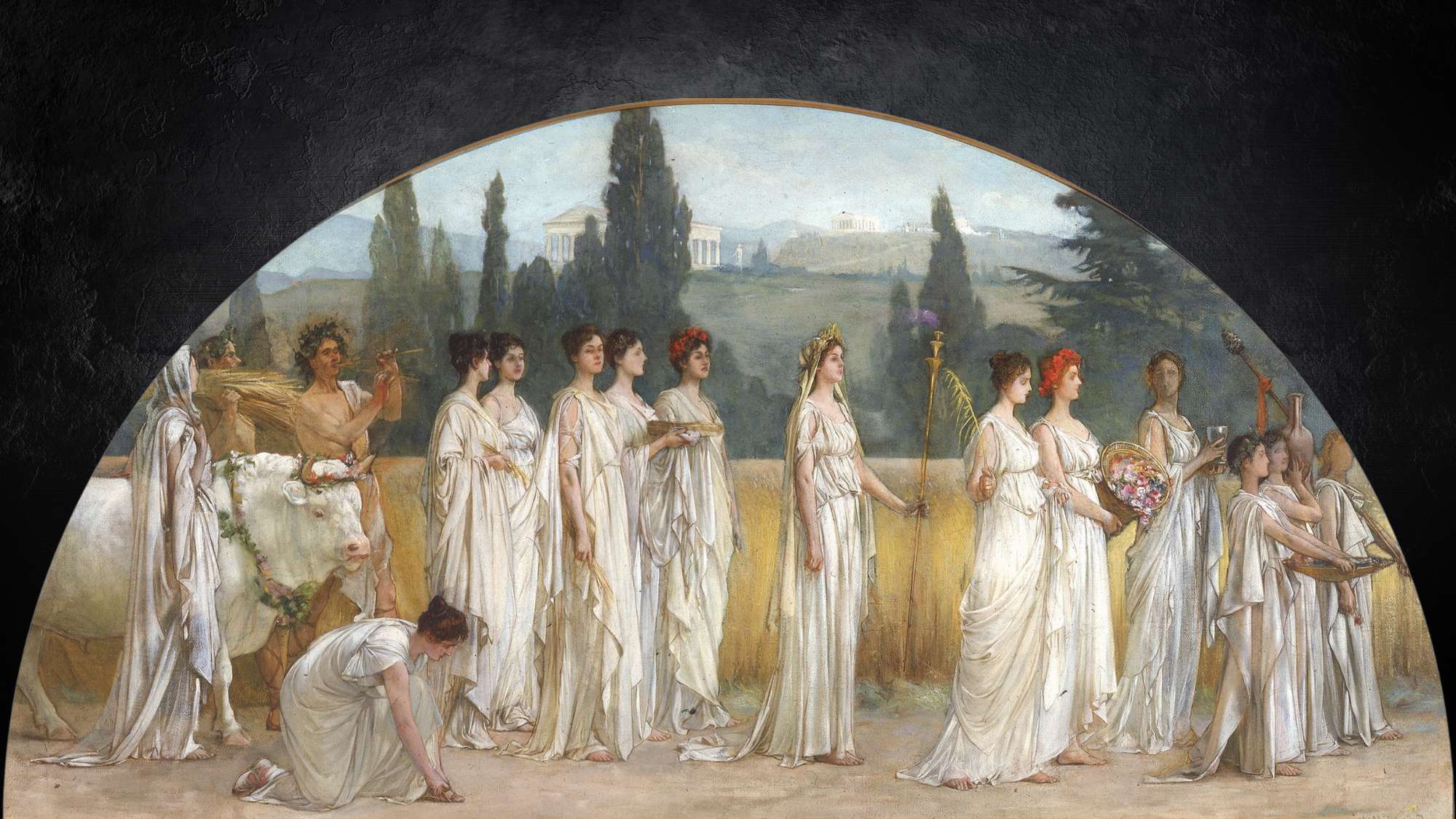

Thanksgiving day is celebrated primarily in the United States and Canada. Traditionally, it has been a time to give thanks for a bountiful harvest — something that the ancient Greeks also did thousands of years ago.
Today, we give thanks not only for Mother Earth, but also for ancestors having found the new world. Although the holiday may have been religious in origin, it is now primarily identified as a secular holiday in North America. In Canada, Thanksgiving is celebrated on the second Monday in October. In the United States, it falls on the fourth Thursday of November.
Here’s how Thanksgiving was celebrated in ancient Greece, with a flavor of mythology.
For thousands of years, festivals for giving thanks have been taking place in around the world. In ancient Greece when Hades, the underworld god, abducted the young maiden Persephone, her mother, Goddess Demeter, wouldn’t feed the world, and winter came upon the land. When Persephone was restored, an elated Demeter gave the gift of agriculture to mankind.
The Greeks believed that because of her, the earth provided the bounty it did. Honoring her with offerings and ceremonies would promise a new and fresh harvest each year. The holiday dedicated to Demeter was called Thesmophoria. Demeter was also called Thesmophoros because she gave certain thesmoi “laws” to mankind. The festival Thesmophoria, was held in the fall during a period known as Pyanopsion. It occurred between October and November — in the same months as the Canadian and U.S. Thanksgivings. The Thesmophoria were the most widespread festivals and the main expression of the cult of Demeter, aside from the Eleusinian Mysteries.
Its main purpose was to promote the fertility of Earth (with crops) and women, who wished to give birth to many children. This would be achieved through secret rituals in honor of the two goddesses. Men were strictly forbidden from attending the rites, and there was a death penalty and castration for those who dared ignore the male ban.
The most important rituals that took place during the event lasted for three days. They typically started with a procession of women who were carrying sacrificial items to a shrine of Demeter. There, they would reenact the grief of Demeter over the abduction to the underworld of her daughter Persephone. Young pigs were also sacrificed and the remains of the animals were buried in underground chambers, specifically designed for the event.
Today, Greeks in America and Canada not only celebrate the modern day “Thesmophoria,” but also add Greek flavor to the American Thanksgiving tradition.
